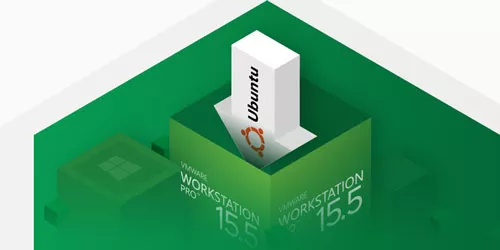[Guest OS: Windows 10/Linux(Ubuntu)] How to Expand VM Disk Space in VMware Workstation
![[Guest OS: Windows 10/Linux(Ubuntu)] How to Expand VM Disk Space in VMware Workstation](../img/computer/guest-os-windows-10-linux-ubuntu-how-to-expand-vm-disk-space-in-vmware-workstation/guest-os-windows-10-linux-ubuntu-how-to-expand-vm-disk-space-in-vmware-workstation.webp)
How do I expand the disk space of a virtual machine in VMware Workstation? If you are confused about this question, This article is perfect for you. In how to Expand VM Disk Space in VMware Workstation, I will tell you how to expand the disk space of virtual machine when the guest operating system is Ubuntu(a distribution of Linux) or Windows. It can be divided into two steps, the first step is expand the size of hard disk in VMware and the second step is expand the storage space in guest operating system. Let's get started now.
Caution: Please backup your important data before performing any expand operations to prevent unexpected situations.
1. Prerequisite
Before expanding disk space of virtual machine, you need to verify that you have met these conditions.
- All snapshots of this virtual machine have been removed.
- Shut down the virtual machine you want to expand disk space for.
- Ensure that the virtual disk is not mapped or mounted.
2. Solutions
Solution 1: Add a new Hard Disk in VMware
Proc 1: Add a new Hard Disk
Step 1: Select the virtual machine you want to expand disk space for from Library.
tip: You can use "F9"/"Fn + F9" to let the Library show up or click view -> Customize -> Library.

Step 2: Click "Edit virtual machine settings", then select the "Add" option in the lower left corner of the "Virtual Machine Settings" window displayed.

Step 3: Select "Hard Disk" and click "Next" button in the "Add Hardware Wizard" window.

Step 4: Follow the instructions displayed in the window. (Generally, the default option is fine.)
Step 5: You can specify disk space you expect in the "Specify Disk Capacity" page.
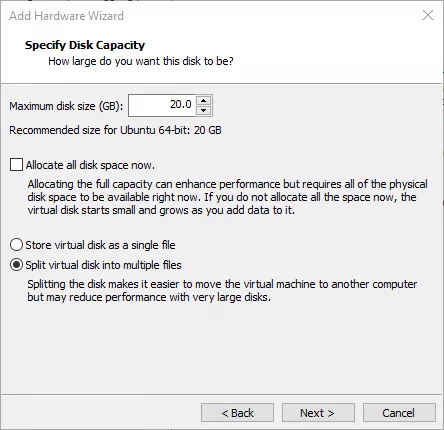
note: The maximum disk size for any hard disk is 8TB(8192GB).
Step 6: Click "OK" in the "Virtual Machine Settings" window after adding the hard disk.
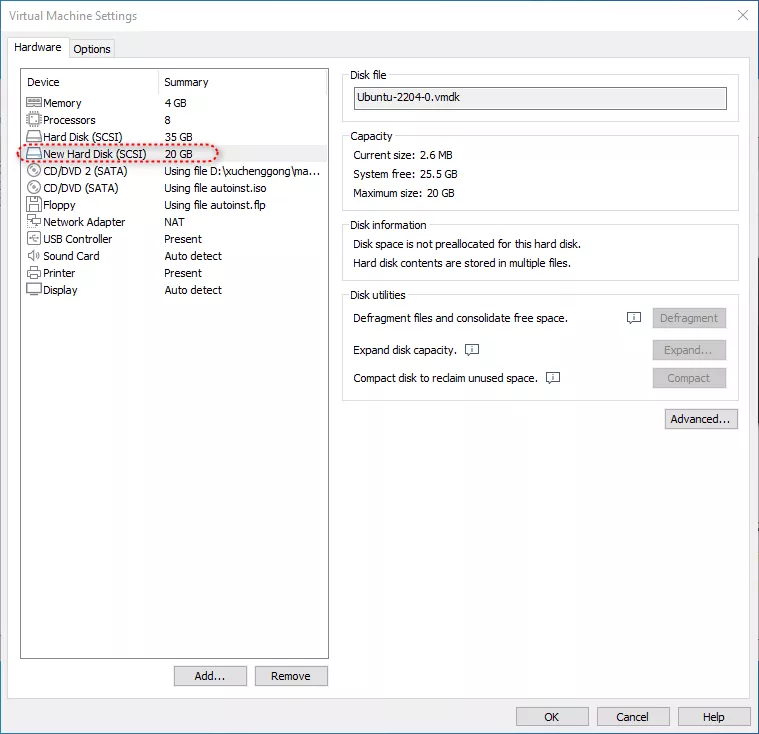
Step 7: You can see a new Hard Disk is displayed in the "Devices" sector. Up to now, we have completed the "expand disk space of virtual machine in VMware Workstation"operation by adding a new Hard Disk.
If your guest os is Windows 10, refer Guest OS: Windows 10 next, otherwise, refer Guest OS: Ubuntu.
Proc 2: Expand storage space in Guest OS
Guest OS: Windows 10
Use Disk Management tool to expand disk space
Step 1: Open Disk Management. You can open it by right-click Windows logo and click "Disk Management" in the menu.
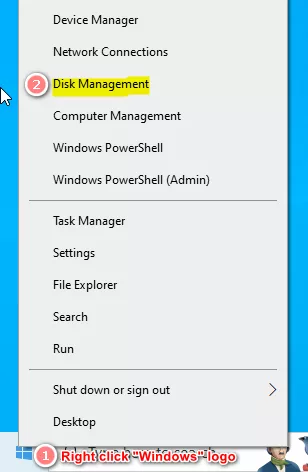
Step 2: The program will prompt you to initialize the disk, Click "OK".
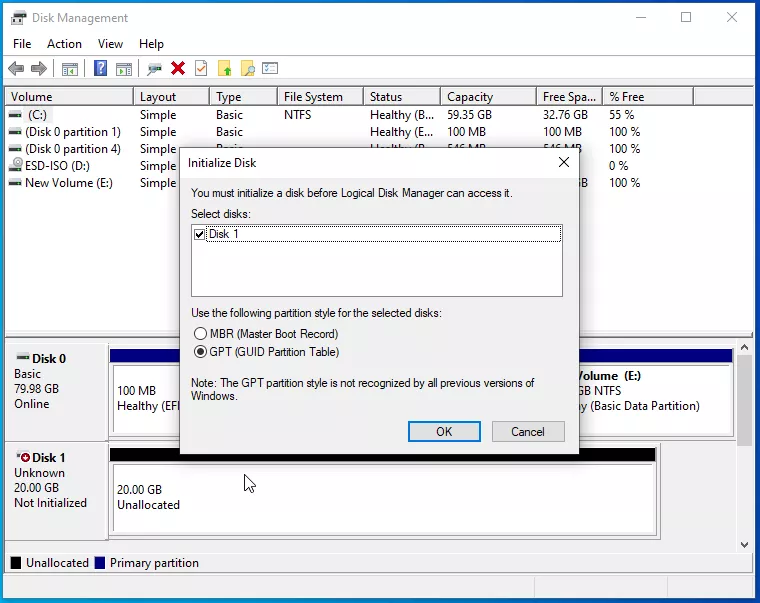
Step 3: The new disk will be displayed in the bottom of the interface, right-click it and select "New Simple Volume".
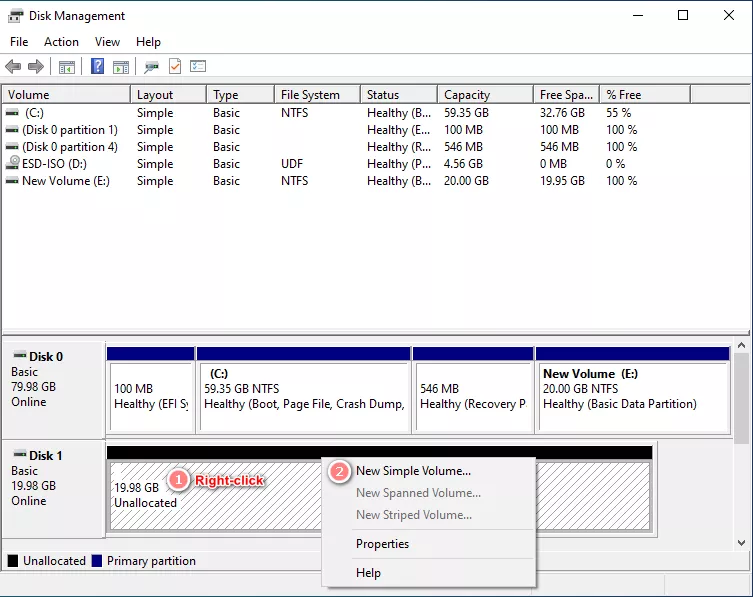
Step 4: The New Simple Volume Wizard will prompt, then complete the operation as wizard instructs.
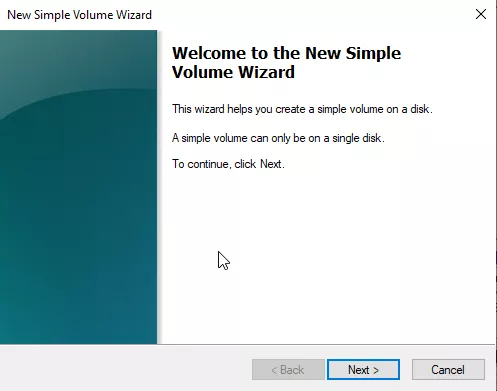
Step 5: You can see a New Volume is displayed now. By far, we've completed all the expansion operations, so enjoy.
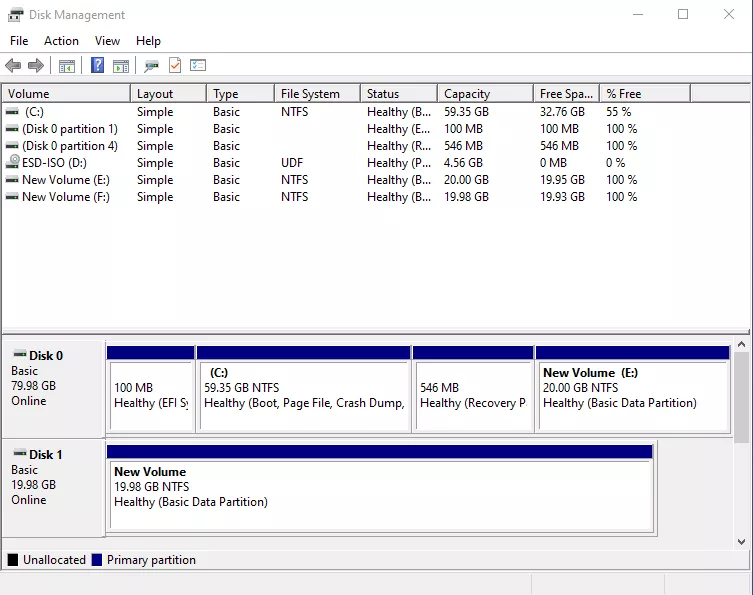
You can also choose other ways to complete the expansion operation, such as diskpart command or third-party expansion tools. If you need more advanced operations, a third-party expansion tools will be a wise way.
Guest OS: Ubuntu 22.04.3 Desktop LTS
way 1: Use Disks(a built-in disk management tool)
Step 1: Open the "Disks". (You can find it in the utilities in the Application Menu.)
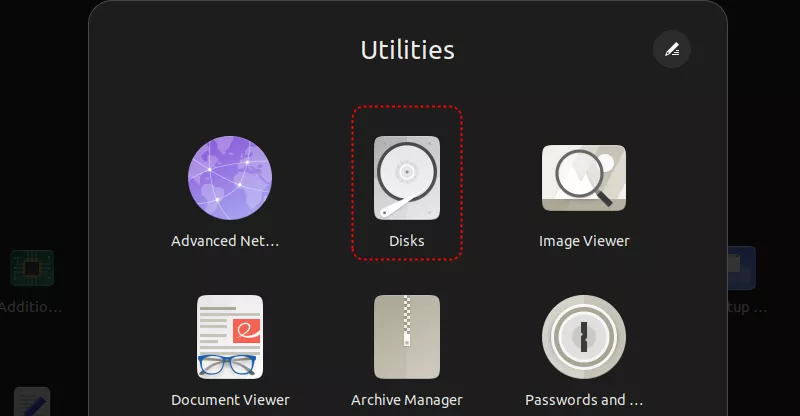
Step 2: You will see the new Hard Disk in the left panel. Select it and right-click "gear" icon then select "Format Partition" option.
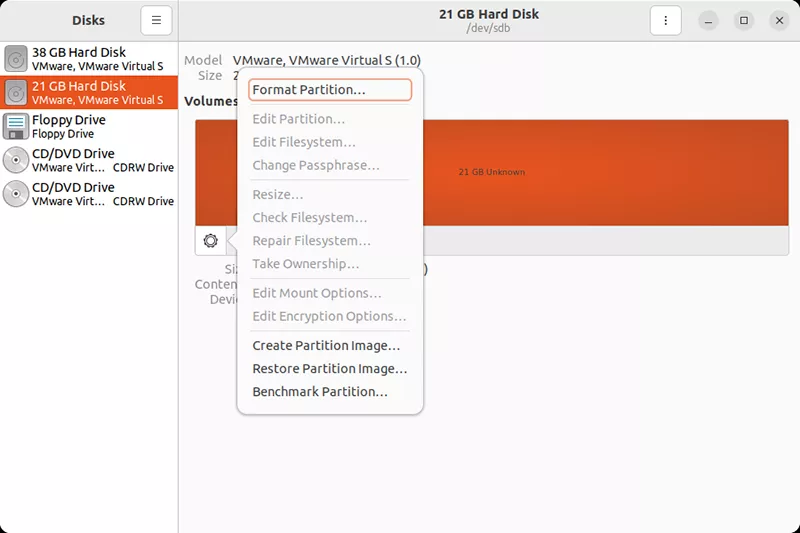

Step 3: Follow the prompts on the page. Enter the password to confirm the operation at the last.
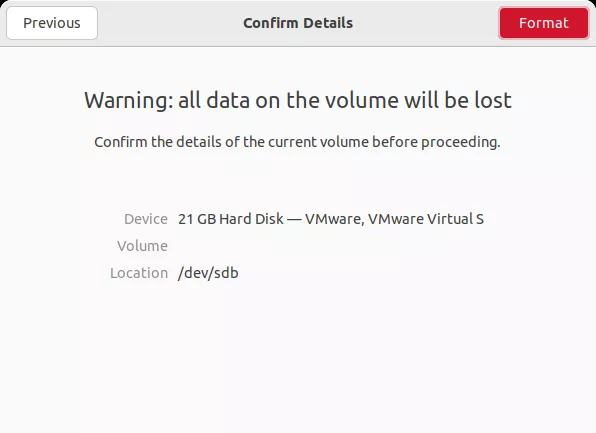
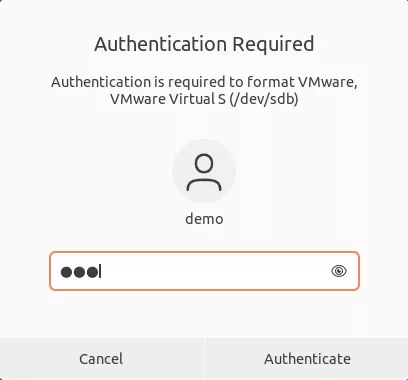
Step 4: Click "Play" icon to mount the partition.
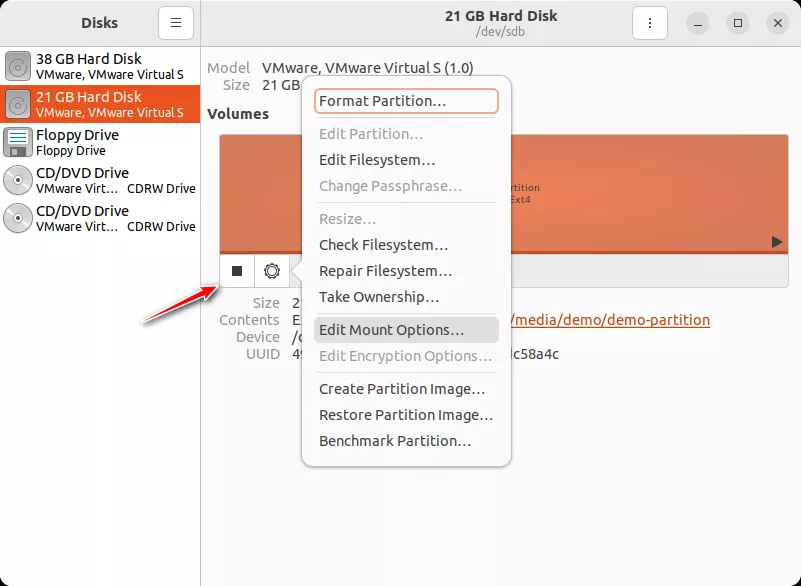
Step 5: If you want to mount the disk at boot time automatically, please perform the following operations.
5.1: Open the "terminal" by pressing "Ctrl + Alt + T".
5.2: Use "sudo nano /etc/fstab" to edit the fstab file. You will see the following contents.
sudo nano /etc/fstab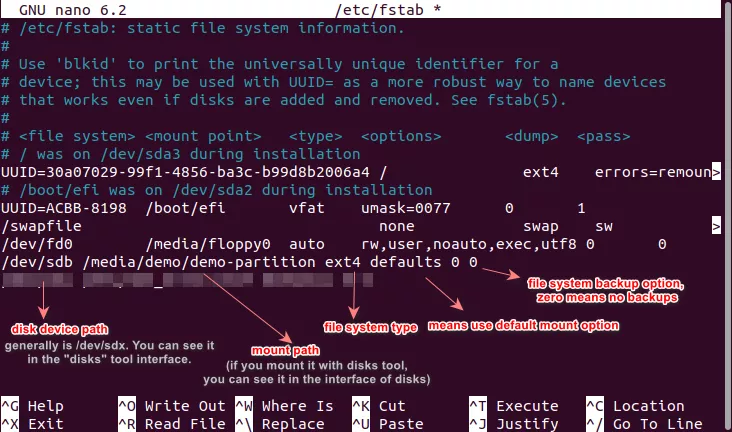
5.3: Add "/dev/sdb /media/demo/demo-partition ext4 defaults 0 0" to the end of the file.
/dev/sdb /media/demo/demo-partition ext4 defaults 0 0// Replace the path with your actual path5.4: Press "Ctrl + X" to exit edit mode, and input "yes" to save the changes made to the file.
5.5: At this point, all operations are completed and the disk is then automatically mounted at boot time. You can continue to use your virtual machine freely.
way 2: Use some commands
Step 1: Open the "terminal" in the Application Menu.
Step 2: Check disk status by "sudo fdisk -l" and find the disk device you need to mount.
sudo fdisk -lnote: Generally, the id of the hard disk is "/dev/sdx".(The x is a letter, such as sda, sdb and so on.)
Like this:
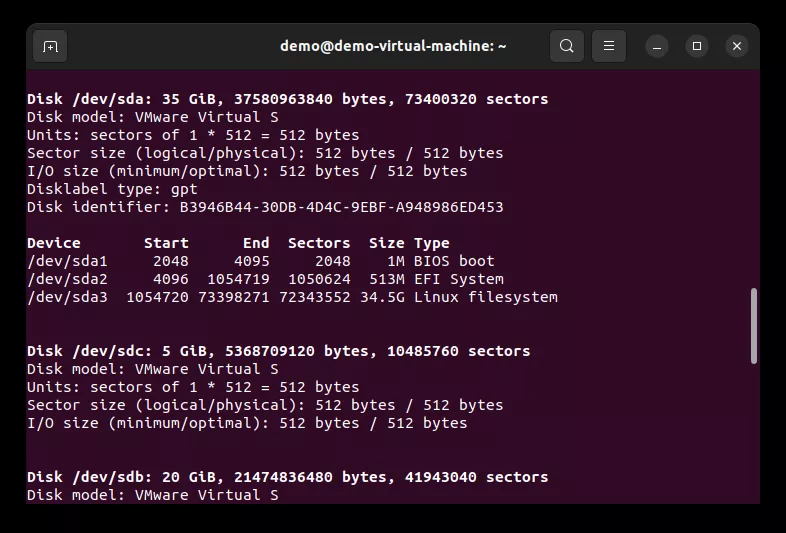
Step 3: Format partation by running "sudo mkfs.ext4 /dev/sdx". (replace "x" with your actual device id)
sudo mkfs.ext4 /dev/sdxStep 4: Use "sudo mkdir /mnt/customname" to create a directory for mounting the disk.
sudo mkdir /mnt/customname// Replace /mnt/customname with your own mount path, generally you should create a subdirectory under the mnt directoryStep 5: Use "sudo mount /dev/sdx /mnt/customname" to mount the disk to the file sytem.
sudo mount /dev/sdx /mnt/customnameStep 6: If you want to set up automatic partition mounting during start-up, please see how to set automount above.
Step 7: You can use "df -hT" to display information about disk space usage for all mounted filesystems.
df -hTSolution 2: Expand the current Hard Disk in VMware
Proc 1: Expand the current Hard Disk
You can also add storage space for virtual machine by expanding the current Virtual Hard Disk space. This is a simpler way. Let's get started now.
Step 1: Select the virtual machine you want to expand. You can refer show-library to perform this.
Step 2: Click "Edit virtual machine settings", then select "Hard Disk" you want to expand in "Hardware" category, then click "Expand" in the right interface.

Step 3: Input the value you want to expand to, then click "Expand" option.
Step 4: Click "OK" option twice.
Step 5: So far, the first procedure that expand the size of Hard Disk in VMware has been completed.
If your guest operating system is Windows 10, please refer Windows10 next, and if your guest os is Ubuntu, refer Ubuntu.
Proc 2: Expand storage space in Guest OS
Guest OS: Windows 10
Use Disk Management tool
Step 1: Run "diskmgmt.msc" command to open Disk Management tool.
diskmgmt.msc// You need to open Command Prompt first.Step 2: You will see "Unallocated" space displayed in the interface. You can create a new simple volume or add it to an existing volume. I'll show you how to add it to an existing volume next.
Step 3: Select an existing volume adjacent to it, then right-click it and select "Extend Volume" option.
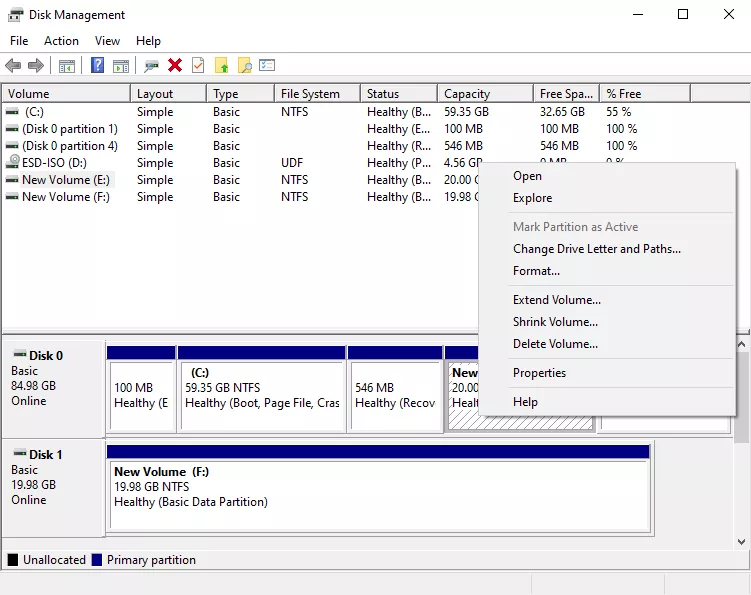
Step 4: Follow Extend Volume Wizard's instructions to complete the extend operation.
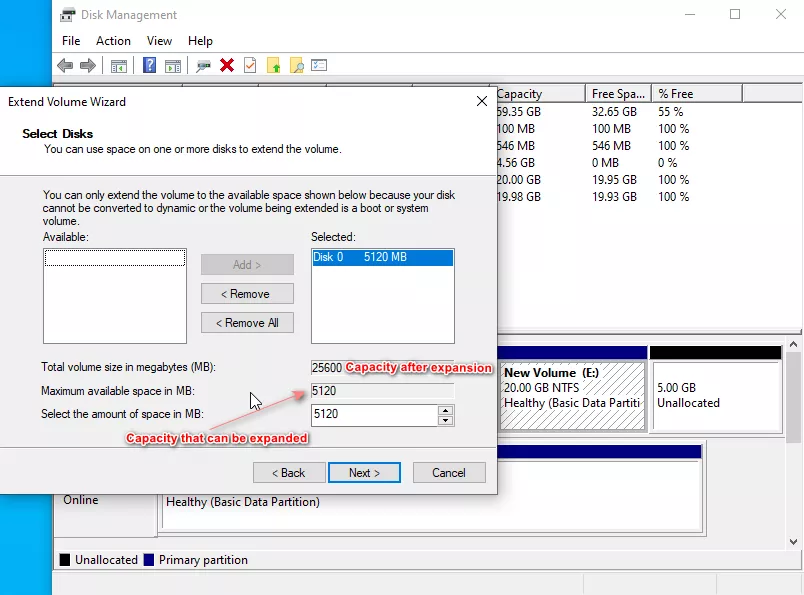
Step 5: The result is like this:
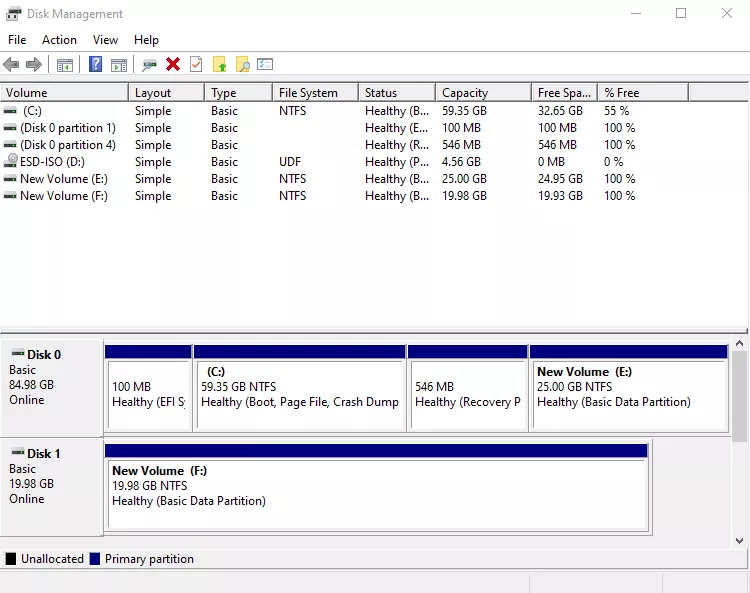
Step 6: Now you can continue to use your computer with plenty of disk space.
If you want to merge non-adjacent partition, a third-party tool is more suitable for you. What's more, you can complete this operation using diskpart command.
Guest OS: Ubuntu 22.04.3 Desktop LTS
Use Disks(a built-in disk management tool)
Step 1: Open the "Disks". (You can find it in the utilities in the Application Menu.)
Step 2: Select the Hard Disk you just expanded, then you will see some free space here.
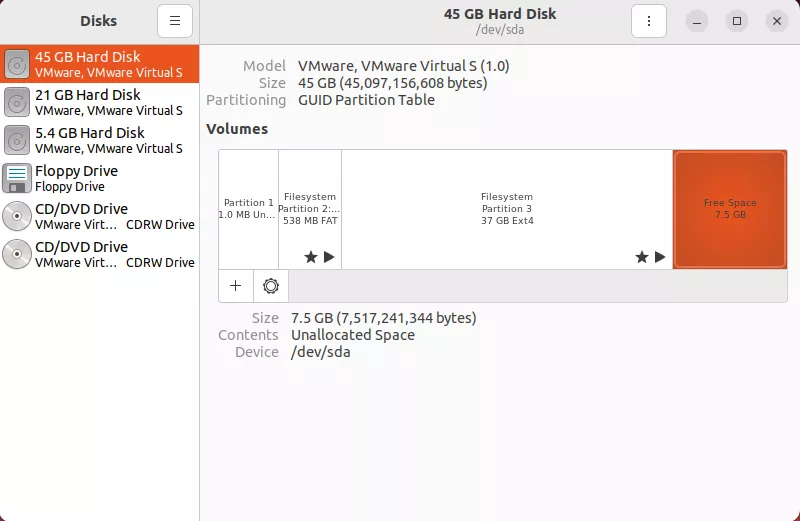
Step 3: Click the existing partition and right-click "gear" icon.
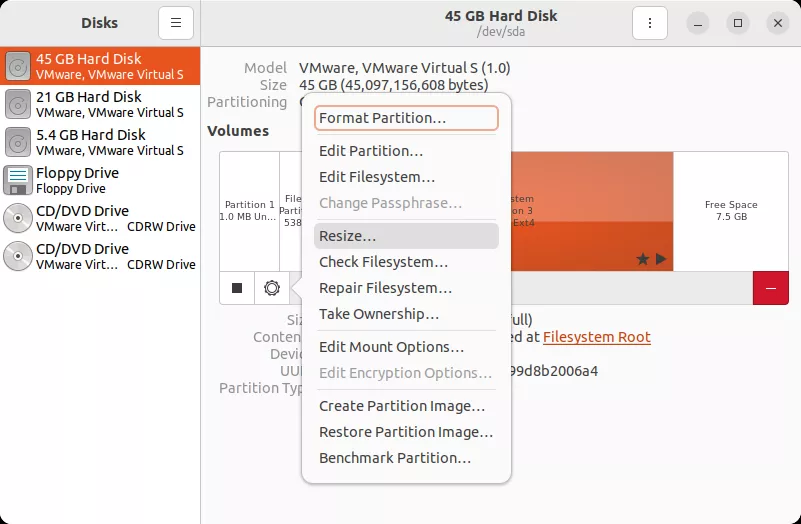
Step 4: Select "Resize" option in the menu, and resize the partition to your desired size.

Step 5: Click "Resize" button in the top-right corner, and enter password to confirm operations.

Step 6: Congratulations, you have successfully expanded disk space of your virtual machine now.
3. Summary
This article provides some basic ways to expand the disk space of virtual machine in VMware Workstation Pro. It contains the content that how to increase the size of virtual disk in VMware and the method that expand the size of the file system within Windows 10 guest os and Ubuntu 22.04 guest os.
If you're not very familiar with commands, a graphical interface is a good choice. And this article mainly describes the way of graphical interface. Finally, be sure to back up in case something unexpected happens. Hope this article will help you expand your disk space easily.
Watch the Video Tutorial
Learn how to expand VM disk sapce on VMware Workstation - Watch the video now!



